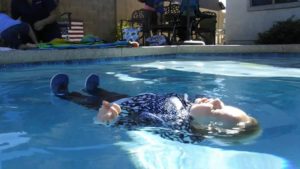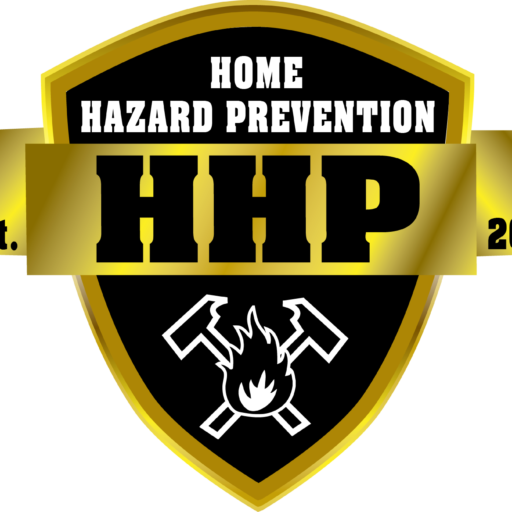My name is Angelee Holt and I have been teaching Infant Swimming Resource (ISR) lessons in Queen Creek for 11+ years. I chose ISR for my oldest child when he was just 15 months old and went through the training that same summer (2007). After having my first child I became so much more aware of preventable accidents and wanted to do whatever I could to help safeguard my own child, as well as others. Although we hear about drownings on a daily basis from our local news stations, the statistics have not changed. In fact, Arizona ranks as one of the highest in drowning (or near drowning) statistics nationwide.
According to the U.S. Centers for Disease Control and Prevention (CDC), drowning is the number one cause of accidental death for infants and young children between the ages of 1-4. Below you will find some simple and effective ways you can help safeguard your family from being a part of that painful and preventable statistic.
5 Important Keys To Water Safety
- Effective Supervision
The most critical line of defense is adult supervision. No level of aquatic skill can replace active supervision. If your child is ever missing, look in the water first. Enforce the C.E.O (Constant Eyes On), and have a rotating schedule of responsible adults if you’re holding a pool party, that way the water is always being watched.
- Pool Fences
Install a permanent 4-sided fence with self-locking gates. Ensure that the pool fence is at least 3-5 feet from the pool edge.
- Alarms
Make sure all doors and windows leading to the pool are locked and alarmed.
- Survival Swimming Lessons
A moment’s inattention does not have to cost a child his life. ISR’s Self-Rescue® training is an added layer of protection, teaching your child water survival skills in a completely safe environment. Visit www.infantswim.com to find a certified instructor near to you, or if you’re in Queen Creek, please contact me, Angelee Holt, at a.holt@infantswim.com.
Even if your child has had swimming lessons, no child is drown-proof and there is absolutely no substitute for adult supervision.
- CPR and AED Use
If an emergency happens, it is essential parents and families are prepared. Learn to perform CPR and use an AED on children and adults and remember to update those skills regularly. Please contact Safety Nick Hansen to schedule your certification today!
Download ISR’s Family Aquatic Safety List to help protect your family from the hazards of an aquatic environment.
Dangers of Floaties
Parents want to keep their children safe in the water, but every time I go swimming at a public pool, I see kids with one of the most dangerous swim toys. It makes me sad, nervous, and completely on alert. This dangerous toy? Floaties. Also knows as arm floaties, swim floaties, puddle jumpers or water wings.
If you own this toy, do yourself and your child a favor. Find it now, and promptly throw it away.
Notice how I keep calling arm floaties a toy? You should, too, because that’s what they are. Floaties are not a water safety tool or a life-saving device in any way, shape, or form. Floaties are dangerous.
Why are floaties dangerous?
- Children are ninjas.
They WILL find a way to take off anything you put on them. Everything. Diapers, clothes (can’t blame them there), car seat buckles, you name it, they WILL figure it out. Children will learn how to remove their floaties. It’s not a matter of if, it’s a matter of when. You don’t want your child to figure out how to take floaties off for the first time when you have your back turned for mere seconds. Arm floaties are notoriously easy to remove and extremely dangerous, but I’ve also seen children harmed from the newer floaties that buckle behind a child’s back. All they need to do is wiggle out them, or have help from a little friend to unbuckle them, and they are in immediate danger.
- Arm floaties are silent.
When children do figure out how to take off their floaties, it will be silent. You will not hear anything. All a parent can do is pray to God they learn this new skill while you are watching. Need to grab something? Turn around to find your other child? Look for sunscreen in your bag? That’s long enough. It only takes a minute, sometimes even seconds, for children to take floaties off and slip under the water. You will not hear a thing, guaranteed.
- Your child will likely be confident when they are in danger.
We call it a false sense of security. What do floaties teach a child? Jump in the water and you will come bouncing up buoyantly to the top. However, small children don’t necessarily understand that this fun floating ability is dependent upon them wearing the floaties. When a child jumps into the water and comes springing up to the air completely by means other than their own, what would you expect? Why would they know differently? Many children have been wearing unsafe floaties since they were infants first entering the water. There is no substitution for watching your child at all times and teaching them how to swim to the top of the water by themselves.
- You will likely be confident when your child is in danger.
Can I tell you something really important? Wonderful, extraordinary parents have been present when their child has drown. You are not exempt. Nine out of 10 children who’ve died in the water were being watched by an adult, according to Safe Kids. We have to evaluate why this is happening, and I know unsafe floaties are undoubtedly contributing to this problem.
You don’t know your child can take off their floaties – until they can. You will have your eyes glued on the pool – until you get momentarily distracted and don’t. It’s not just your child who will gain a false sense of security from floaties, it’s you, too. Anything that lessens our best defense to prevent drowning by being alert and constantly watching our children by water, even heightened confidence, is a major problem.
Here’s one more thing to think about when you consider allowing your child to use floaties: in the World Health Organization’s 2014 Global Report on Drowning, swim aids were NOT included in their list of the top 10 actions that can prevent drowning, because people still drown while wearing life jackets and flotation aids.
Water safety isn’t a game, so there is no room for toys in your safety plans.
Since 2007, I have taught over 1,800 children in the Queen Creek and surrounding communities. I have had countless testimonials from parents sharing how their child effectively used their skills learned in ISR lessons to self-rescue. In addition, the skills taught in ISR lessons not only provide children with the skills to be competent in the water, but confident as well. If you have any questions about anything that you have read regarding water safety or floatation devises, or if you would like to learn more about Infant Swimming Resource lessons, please don’t hesitate to contact me directly.
SWIMcerely,
Angelee Holt
Angelee is a close family friend, and an infant water safety expert. Our 2 girls have completed their ISR training with Angelee. We implore you to please take your child’s safety seriously. We do not even own a pool, but everyone around us does. As always, please reach out with any questions or concerns that you have about anything safety-related.
–Safety Nick


